Southwest Michigan fruit update – 2020 review
Freezes in April and May damaged many crops. A dry summer kept disease pressure down in most fruits. Crop quality and volumes were generally good.

Weather
The winter of 2019-2020 was mild. Most of southwest Michigan rarely saw temperatures below 10 degrees Fahrenheit. Most plants completed their chilling requirements ahead of average: peaches and grapes by early January and apples, blueberries, cherries, pears and plums by late January. The weather remained cool for February and March. The first half of April was warm, pushing rapid crop development.
A radiation freeze on April 16, with low temperatures between 20-24 F, killed blossoms on early flowering tree fruits. Apricots, cherries and Japanese plums were the most affected. A cool trend in the second half of April into May caused slow development and long bloom periods for most tree fruit. A second freeze on May 9 saw lows between 19-23 F inland along the I-94 corridor. This freeze damaged many crops missed by the April freeze. In some sites, wind machines reduced damage during these radiation freezes.
With the exception of June, which was hot and dry, the growing season saw mostly average temperatures. Overall, southwest Michigan saw a summer that was slightly cooler than average compared to recent seasons.
|
Southwest Michigan Research and Extension Center growing degree day (GDD) summary from March 1 – Oct. 1. |
|||
|---|---|---|---|
|
Year |
GDD 42 F |
GDD 45 F |
GDD 50 F |
|
2020 |
4143 |
3628 |
2821 |
|
2019 |
4030 |
3508 |
2698 |
|
2018 |
4240 |
3740 |
2938 |
|
2017 |
4196 |
3640 |
2773 |
|
2016 |
4728 |
4178 |
3311 |
|
2015 |
4171 |
3642 |
2815 |
|
Average of 6 years |
4251 |
3723 |
2893 |
Precipitation was average through the spring, but the first half of June was very dry for Southwest Michigan. This dry spell got us into a mild drought and we never caught up. By mid-June, growers were seeing drought stress in some tree fruits in sandy, drought prone sites. Most of the summer rain came from quick storm events.
|
Southwest Michigan Research and Extension Center rainfall summary from June 1 - Oct. 1. |
||
|---|---|---|
|
Year |
In. rainfall |
Hrs. with rain |
|
2020 |
9.57 |
123 |
|
2019 |
15.38 |
176 |
|
2018 |
14.42 |
172 |
|
2017 |
10.58 |
134 |
|
2016 |
15.53 |
143 |
|
2015 |
12.64 |
140 |
|
Average of 6 years |
13.02 |
148 |
One notable storm on June 9-10 was the remnant of tropical storm Cristobal. Its eastern arms brought rain and winds to much of western Michigan as it passed northward through Wisconsin, Michigan’s Upper Peninsula, and into Canada before dissipating at the southern shore of Hudson Bay in Canada, becoming the first tropical system to ever reach Lake Superior in the process.
A more localized storm event passed through the area on Aug. 10. Known officially as a derecho, the line of storms brought severe rain and extreme straight line winds. The system formed over Iowa, where it caused the worst damage, before quickly tracking to southwestern Michigan where it finally dissipated. In Michigan, Berrien County was the hardest hit. Several tree fruit growers reported apples and peaches being blown off the trees. Grape growers experienced many broken trellis posts where the rows of vines acted like sails, with one notably stating his farm replaced almost 1,000 posts as a result of the 30-minute event.
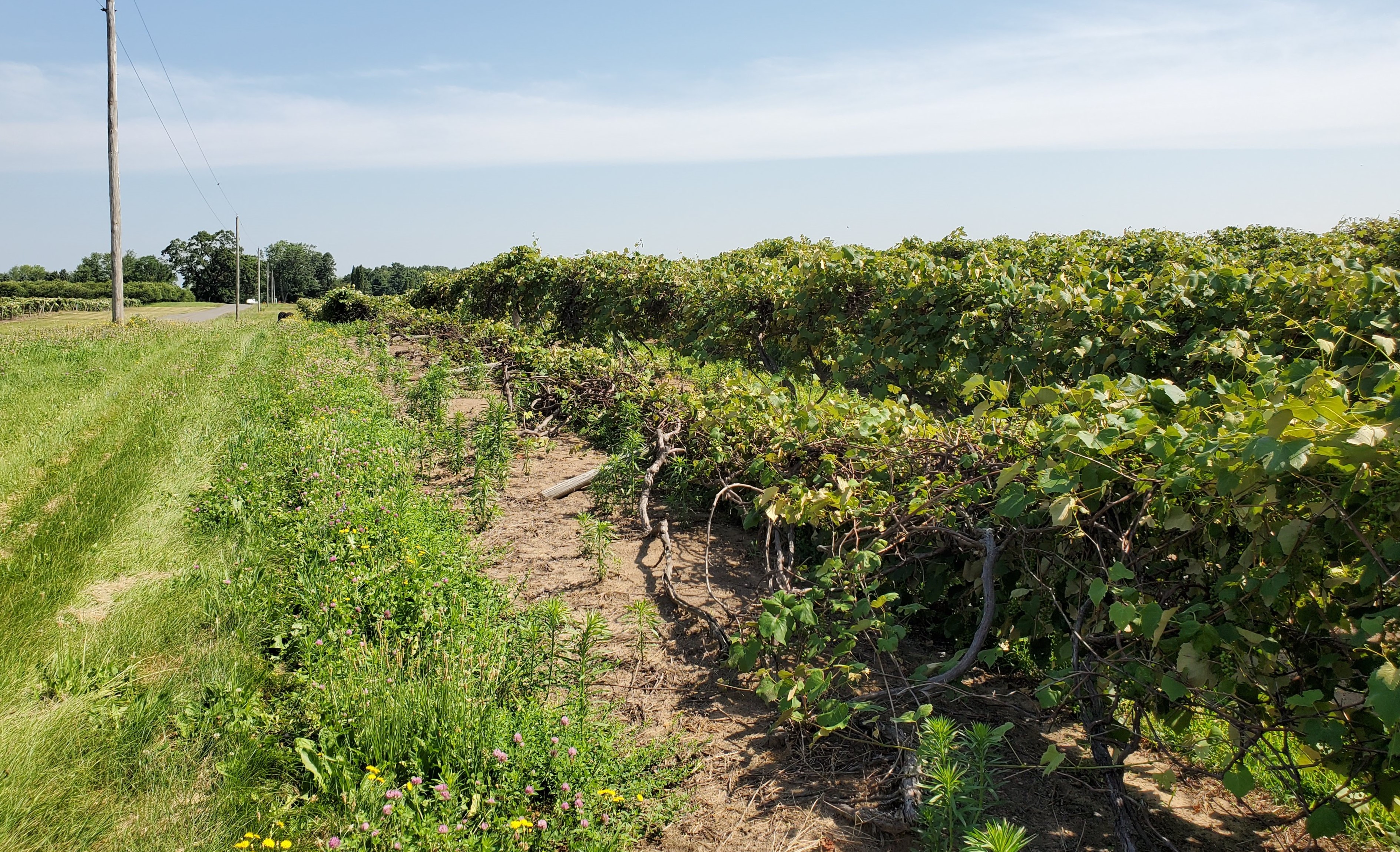
Tree fruit
Growers were encouraged by the mild winter and slow start to spring. The warm weather in early April sped up development. Many crops bloomed ahead of their average bloom dates. The impacts of the April 16 and May 9 freezes were dependent on the growth stage of the bloom. Those that were close to bloom during the freeze had 50-90% crop loss, depending on site. Varieties not blooming were less severely affected. As crop development continued through the spring, signs of persisting damage to cambium and young xylem in trunks and limbs of some trees, especially peaches, developed in severely affected sites. This damage stemmed from extreme low temperatures from January 2019. Codling moth and oriental fruit moth populations were noticeably low all year at most sites. The first significant catches of the summer population of brown marmorated stink bug (BMSB) were on Aug. 4. Relative catch numbers and damage by this pest were generally low, much like 2019.
Apricots bloom began on April 12. Some varieties were severely affected by the April 16 freeze. As a result of the freeze, the crop was generally light to very light.
Early peach varieties showed pink on April 20. The April 16 freeze caused some damage. Bloom began on May 1 and the May 9 freeze caused widespread damage, significantly reducing crop on some peach varieties while leaving others untouched in a few locations. As a result of the May freeze, the peach crop was light across the region. Harvest of earliest varieties started the third week of June. Harvest of Redhaven peaches was very close to the predicted date of Aug. 4 for central Berrien County. Sunny and dry conditions were great for size, color and flavor. Peach leaf curl was a significant problem on some farms in spring 2020. Less snow and more rain during the 2019-2020 winter may have reduced carryover fungicide residue, leaving the tree less protected against spring infections by peach leaf curl.
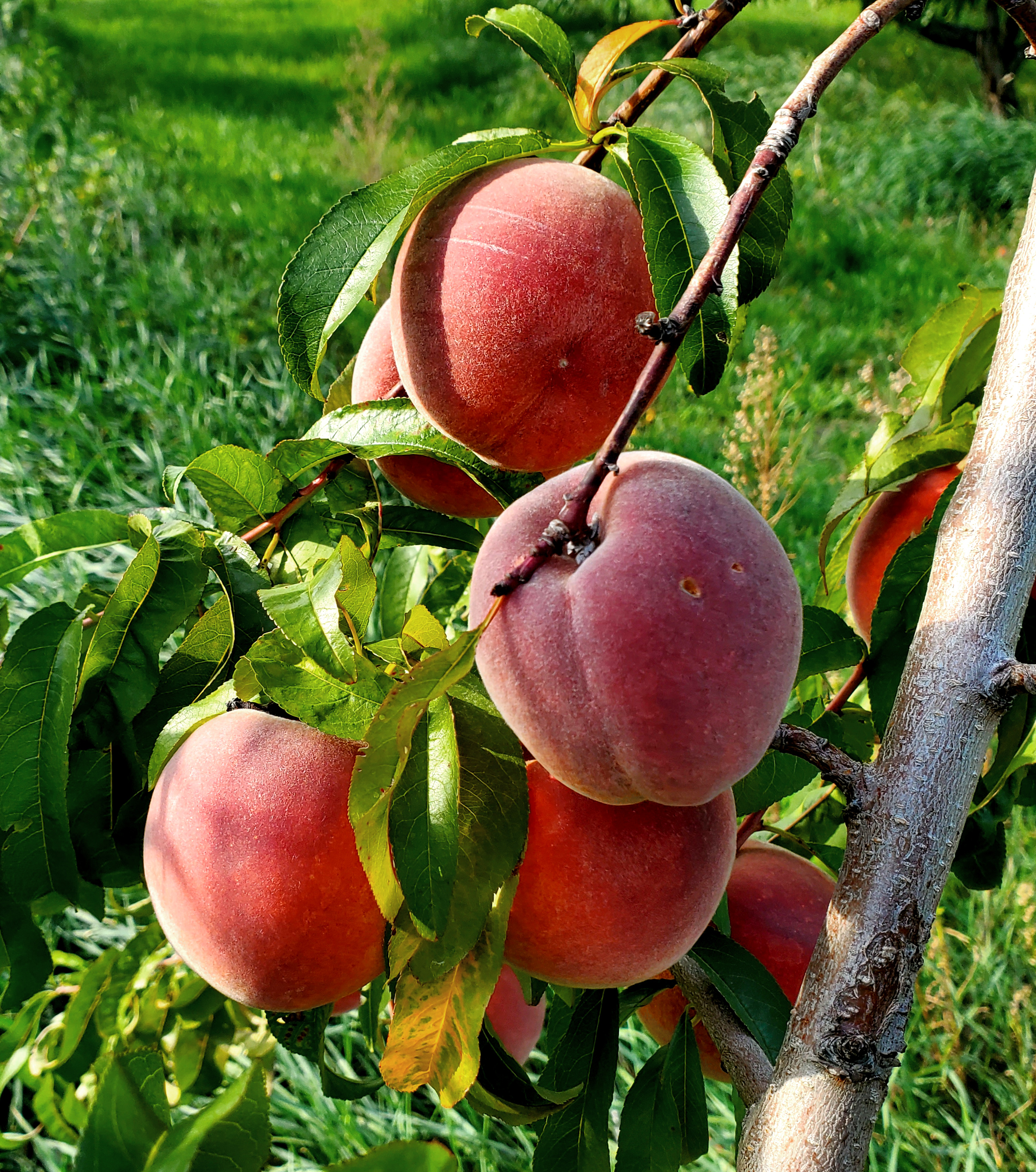
The April 16 freeze caused moderate to severe damage to cherries. Sweet cherries bloomed during the last week of April. Many blooms had dead pistils, killed in the April freeze. Many of the blooms that did survive were killed by the May 9 freeze. Tart cherries were also severely damage by the April freeze even though they were only in the swollen bud stage. Sweet and tart cherry crops were extremely light. Even with low crops, many growers still picked due to high local demand or high prices from processors. Sweet cherry harvest was the last week of June. Tart harvest was July 4-6. Both harvests were very short due to the light crop.

Japanese plums bloomed during the second week of April. European plums started blooming around May 1. Harvest started fourth week of July. Japanese plums were more affected than European plum by the spring freezes. Overall, plums had light to average crops, depending on variety.
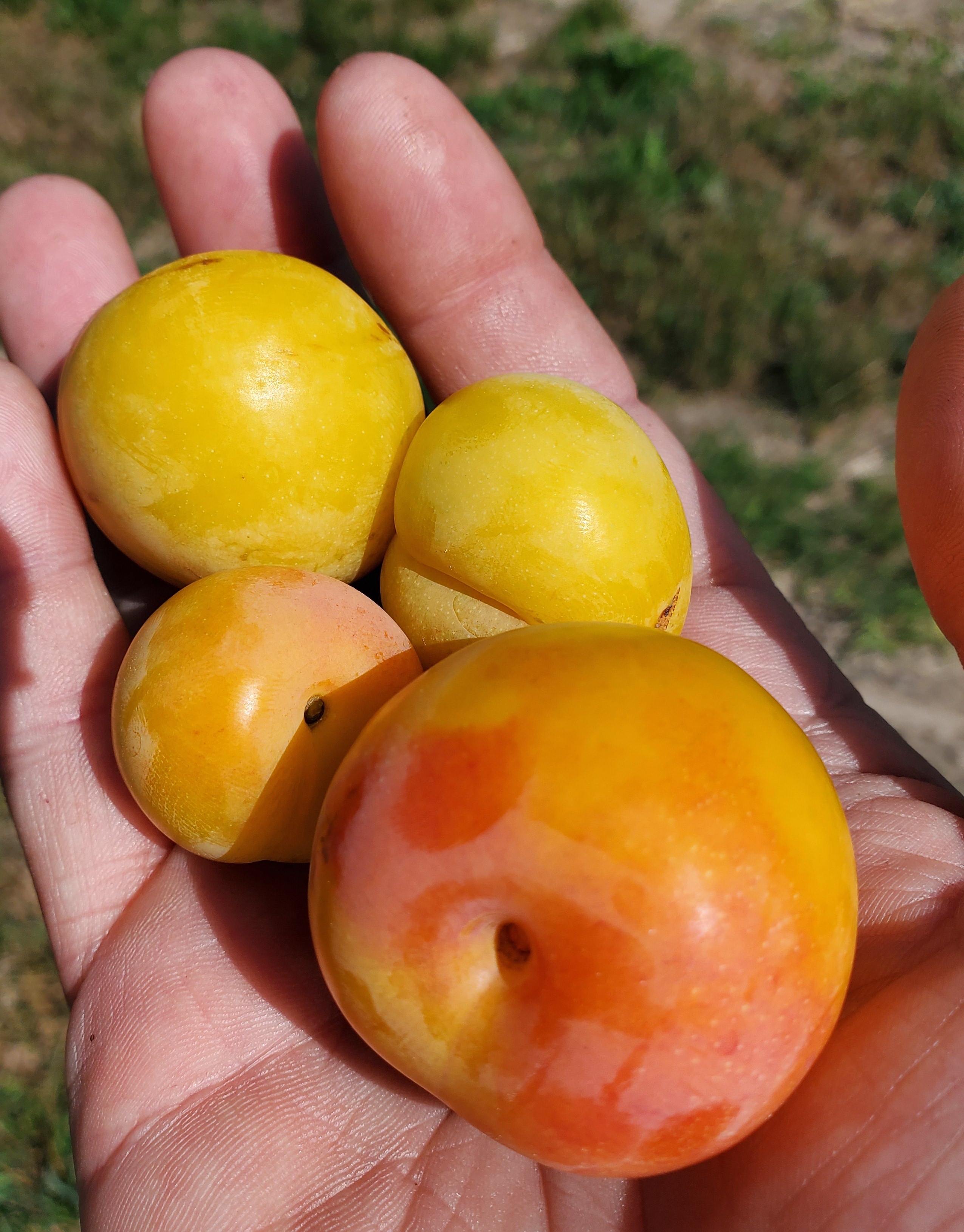
Apples were less affected than stone fruit by the spring freezes. Some damage from the first freeze was reported in susceptible sites. The impacts of the second freeze was variety and site specific. Early varieties began blooming the first week of May. Michigan State University's Enviroweather predicted several fire blight infection events the last week of May near the end of bloom, but growers did a good job maintaining protection. Very few fire blight symptoms were seen in the area.
The hot, sunny weather in June and July caused noticeable sunscald damage to susceptible varieties. Predicted peak harvest dates were two to three days behind normal for most varieties. Due to the summer weather conditions, many varieties were a few days ahead of their predicted dates. Temperatures dropped into the low 30s on Sept. 18. This frost was responsible for chilling injury to skin and flesh of Honeycrisp and Jonathan apples. Symptoms sometimes were not immediately obvious.
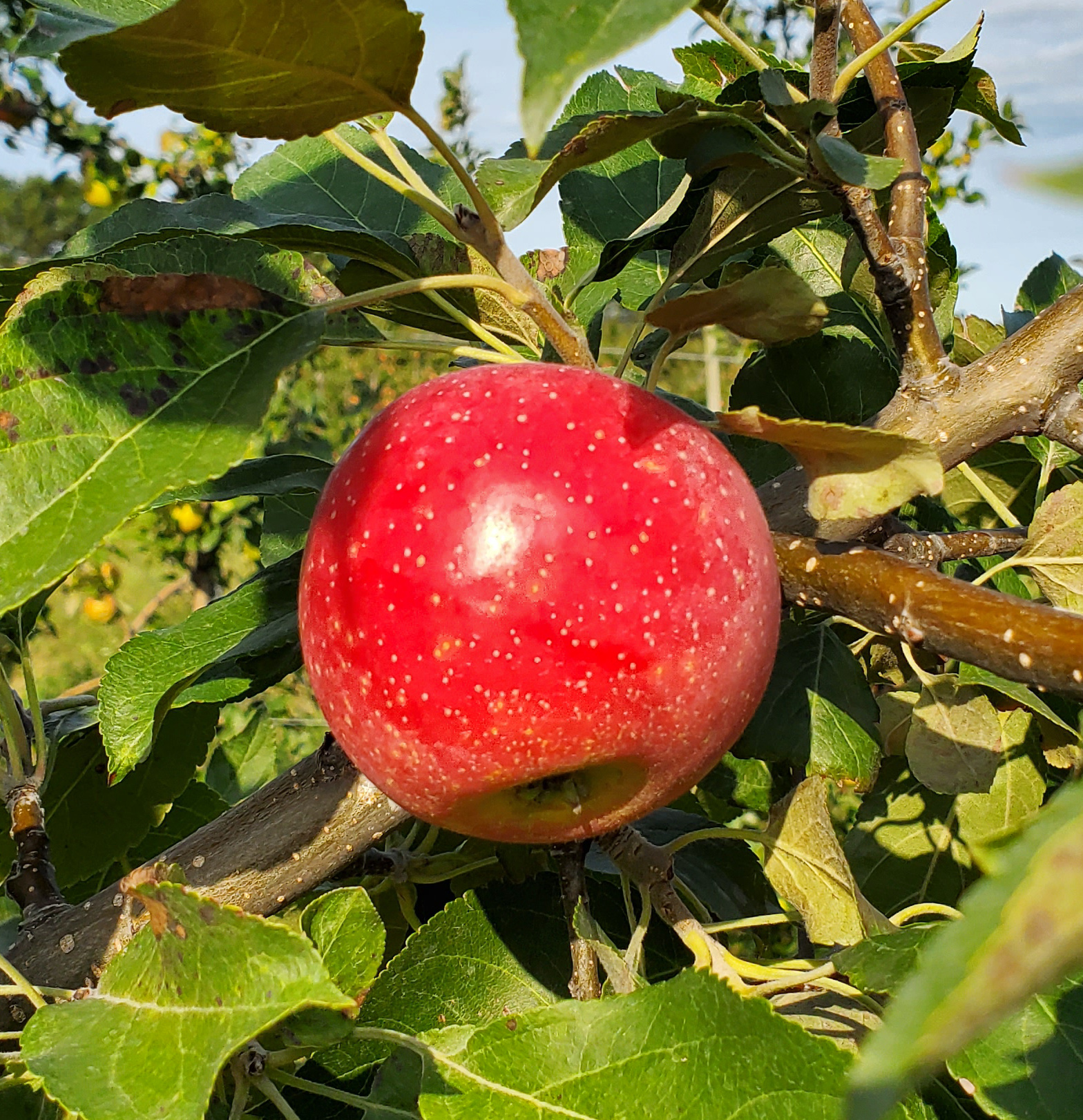
Early pear varieties were blooming by the end of April. As with apples, the May 9 freeze was variety and site specific. Fire blight warnings were issued by Enviroweather, but growers maintained coverage. Harvest of the early varieties started around the end of August, as predicted. Overall, pear harvest was average.
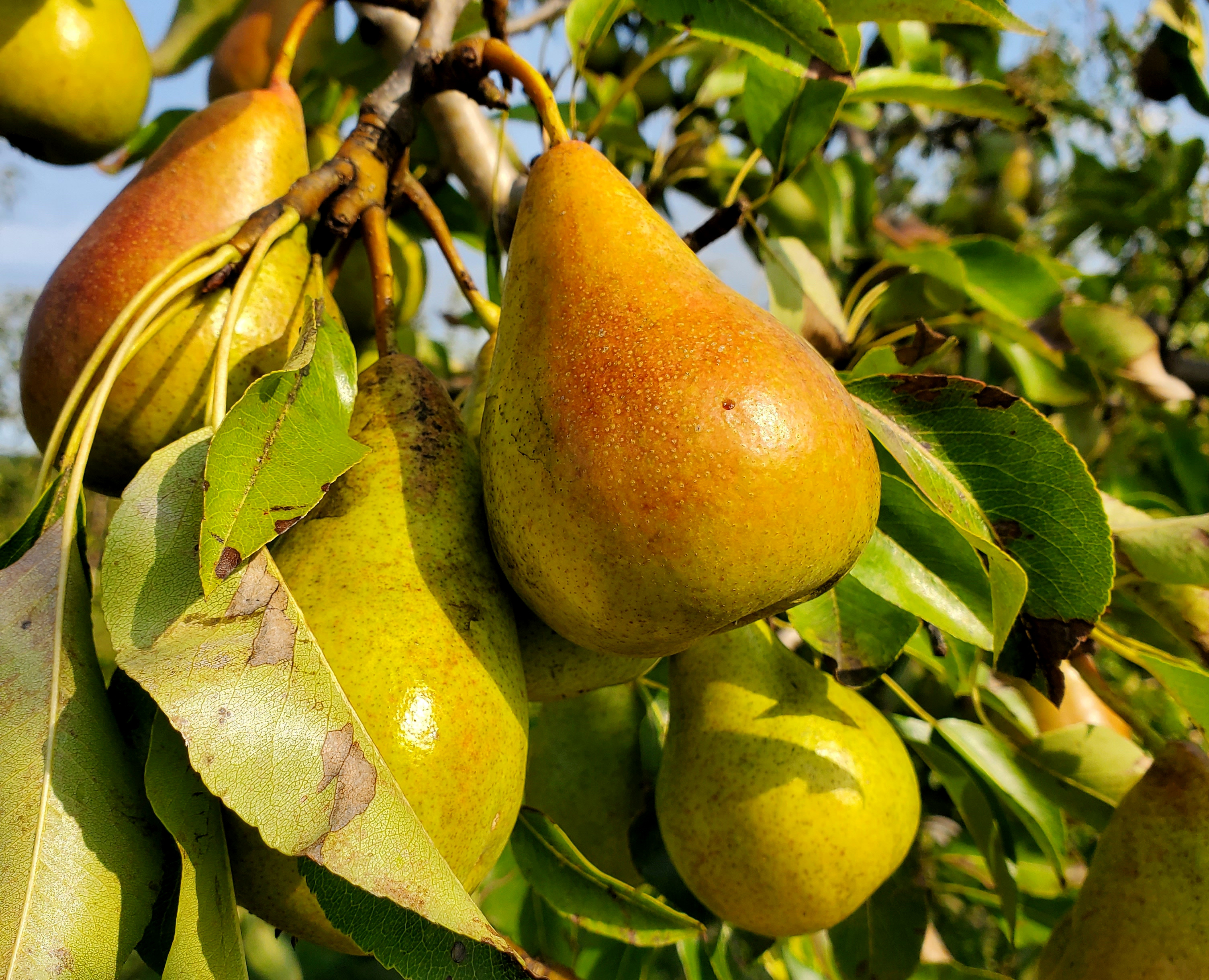
Small fruit
The April 16 freeze had little impact on berries and grapes. The May 9 freeze caused damage to grapes, blueberries and strawberries. Spotted wing Drosophila (SWD) were first caught around July 1. SWD numbers were relatively low at most sites until the end of July. SWD numbers rose rapidly in August. Overall, catches of SWD were average compared to previous years.
|
Southwest Michigan Research and Extension Center grape GDD base 50 from April 1 to Oct. 1, 2020 |
|
|---|---|
|
Year |
GDD 50 F |
|
2020 |
2801 |
|
2019 |
2688 |
|
2018 |
2937 |
|
2017 |
2741 |
|
2016 |
3244 |
|
2015 |
2802 |
|
6-year average |
2869 |
Grape bud break for Concord and Niagara juice grapes was May 1. The May 9 freeze caused up to 50% primary bud damage to Concord and Niagara in frost prone sites. Little to no damage was recorded on other grape varieties, mainly because they were not at swollen bud yet. Budbreak for wine grapes occurred the third week of May.
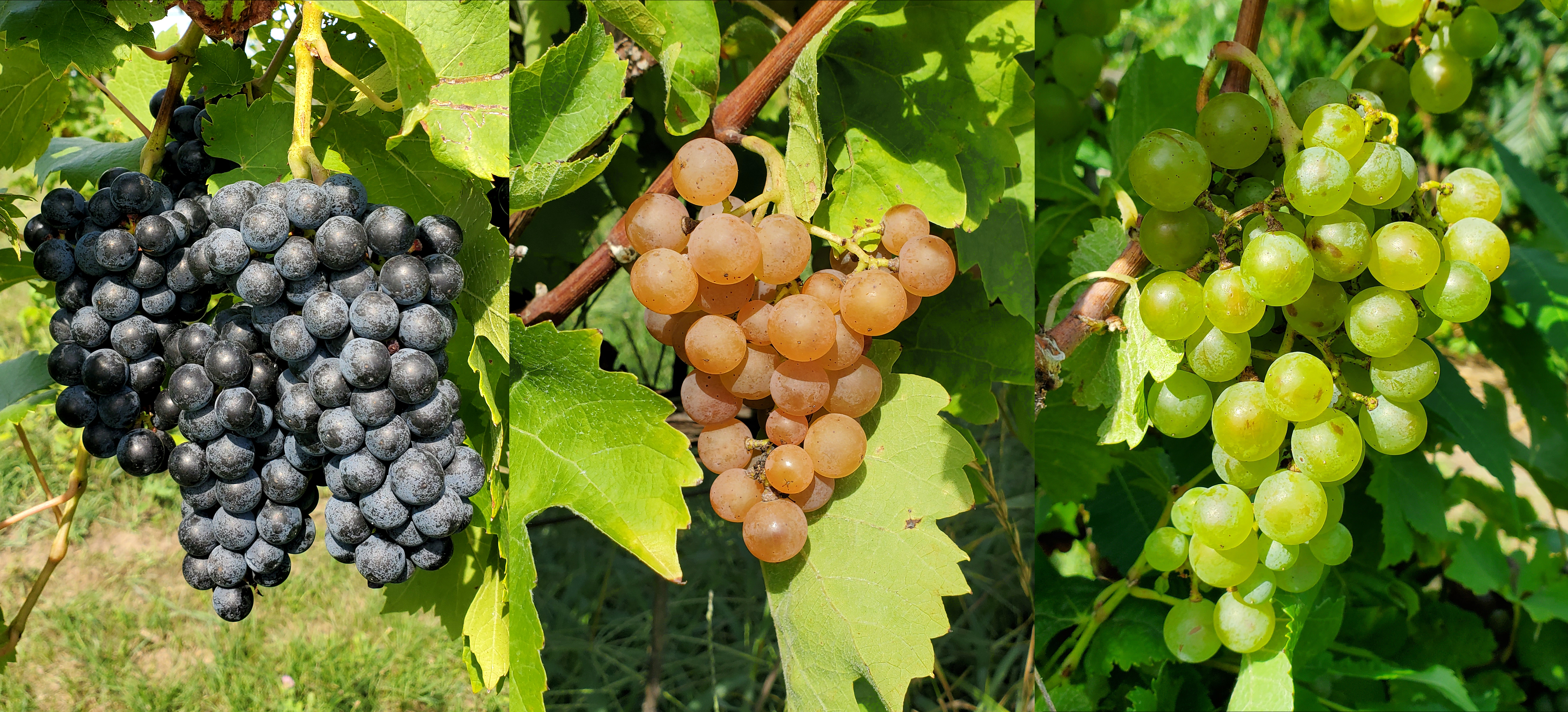
Tumid gallmaker damage was widespread this year with some small vineyard growers reporting significant yield losses. This insect is mainly a pest of hybrid wine grapes, but damage was found in several Concord vineyards as well.
Wild grape bloom was between June 2-4 in much of southwest Michigan. Wild grape bloom is used as biofix for grape berry moth egglaying and treatment. Trap catches of the first generation of grape berry moth were unusually high, probably due to high populations overwintering from 2019. Predicted dates for the start of egglaying for the second and third generations of grape berry moth were July 4-7 and Aug. 2-7, respectively. A strong fourth generation was recorded this year with egglaying starting on Sept. 5-10, depending on location.
Marquette, Frontenac and Niagara were the first varieties to bloom during the second week of June. Veraison of Marquette started the first week of August. Concord veraison started two weeks later. Marquette, Frontenac and Foch harvest started the first week of September. Niagara harvest was split this year and occurred on Sept. 21-25 and Oct. 9-14. Concord harvest was Sept. 25-Oct. 8.
Overall, insect and disease losses were low this year. The warm, dry weather kept most diseases at bay and gave good conditions for growers to maintain their pesticide coverage. Crop volumes were average to above average and quality was above average. Several wine grape growers have stated they think this will be a vintage year.
The two spring freezes caused isolated damage in cold locations and early blooming blueberry varieties. Bloom started May 15 for early varieties. Harvest started last week of June. Fruit size good for first pickings of most varieties, but later pickings varied dramatically. The hot, dry weather of June and July resulting in small berries in non-irrigated sites. Some fields were not harvested due to low prices.
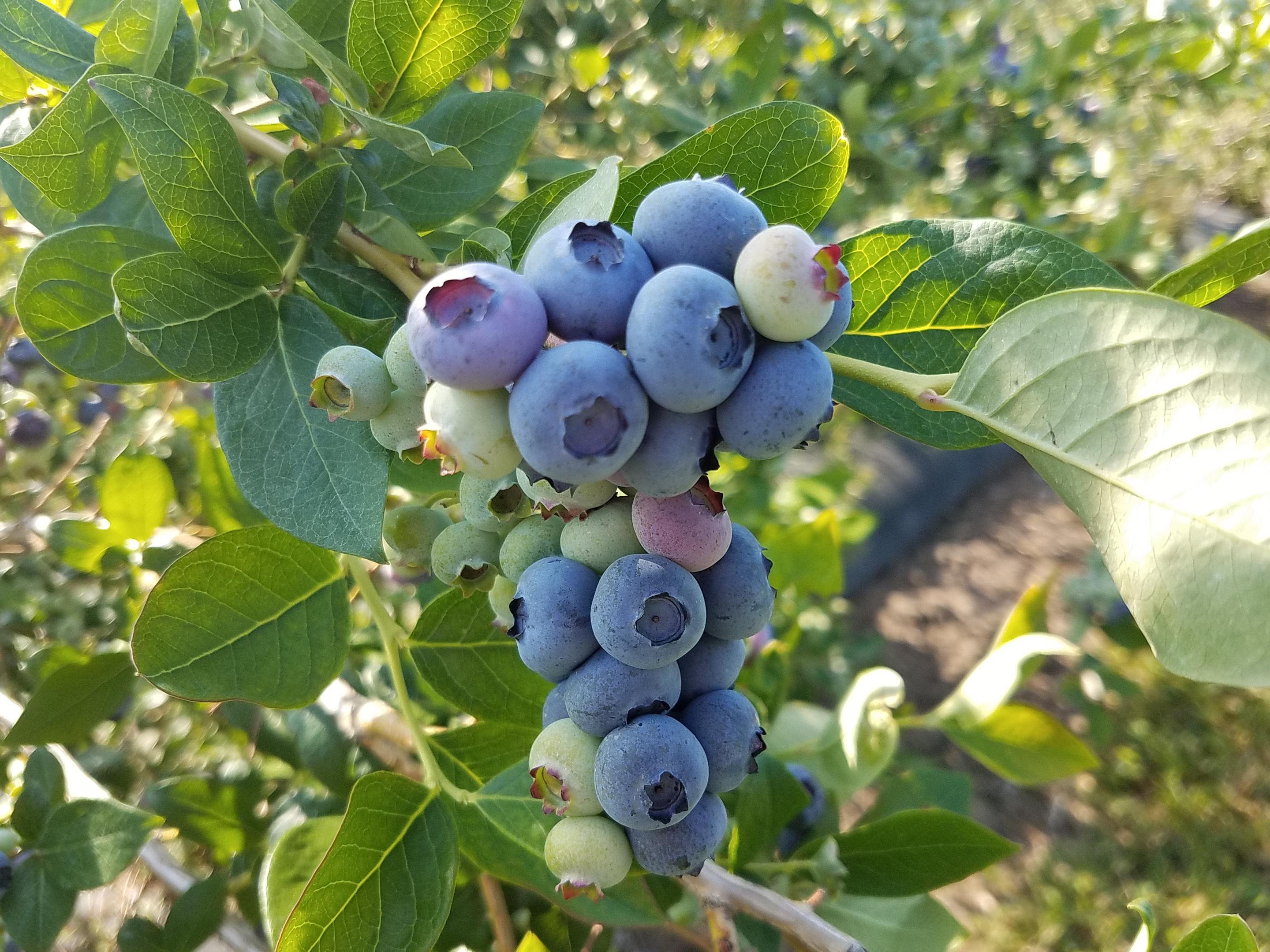
Strawberry buds emerged from crown first week of April. Bloom began the third week of May. Many growers used sprinklers to protect their fields from the May 9 freeze. Some early bloom was lost, but most flowers were unaffected. Strawberry harvest started June 13. Berry size and quality were generally good, but harvest was short due to the hot, dry June.
In brambles, raspberries and blackberries were unaffected by the spring freezes. Bloom began the last week of May. Harvest of summer bearing raspberries started in the last week of June. Overall, crop quality and volumes were average to above average in most areas.



 Print
Print Email
Email
